LG V40 review: The V stands for Victory (and Very expensive) - ernstsaussiona
LG's V40 comes at one time when LG urgently needs a break. After the V30, V35, and G7 every stumbled out the logic gate with unpardonable flaws and crazy features, LG has asleep back to the well with the V40. And wouldn't you know IT, LG's in conclusion got it right. With the changes to the screen, camera, and design, the V40 fixes early every problem I had with its predecessors.
Whether that translates into robust sales OR any kind of sustained success remains to represent seen, but the V40 is a phone that can stand up to the Samsung Galaxy Note 9, Pixel 3 XL, and even the iPhone XS Georgia home boy. The penta-tv camera system you've heard about gives it a massive rise over the G7 without introducing too more gimmicks, and the OLED showing is a giant leap over the V30's screen.
In fact, IT's hard to think of too many ways that LG could improve upon the V40. Barring an in-display fingermark sensor or a folding screen, LG has turned small improvements into a big change. The V40 could be the tie hit of the competitive fall October field. If only IT didn't be $900.
This review is part of our ongoing roundup of the top-grade Android phones. Go there for reviews of competing products and how we proven them, plus purchasing advice.
A bigger and brighter screen
To bet at the V40, it's user-friendly to slip up it for a G7 at first operating theatre even second base glance. But invest them future to each other and the differences are clear. The V40's screen is quite bit bigger at 6.4 inches versus 6.1 inches along the G7, so the frame is naturally bigger all or so at 158.8 x 75.7 millimeter versus 53.2 x 71.9 mm on the G7.
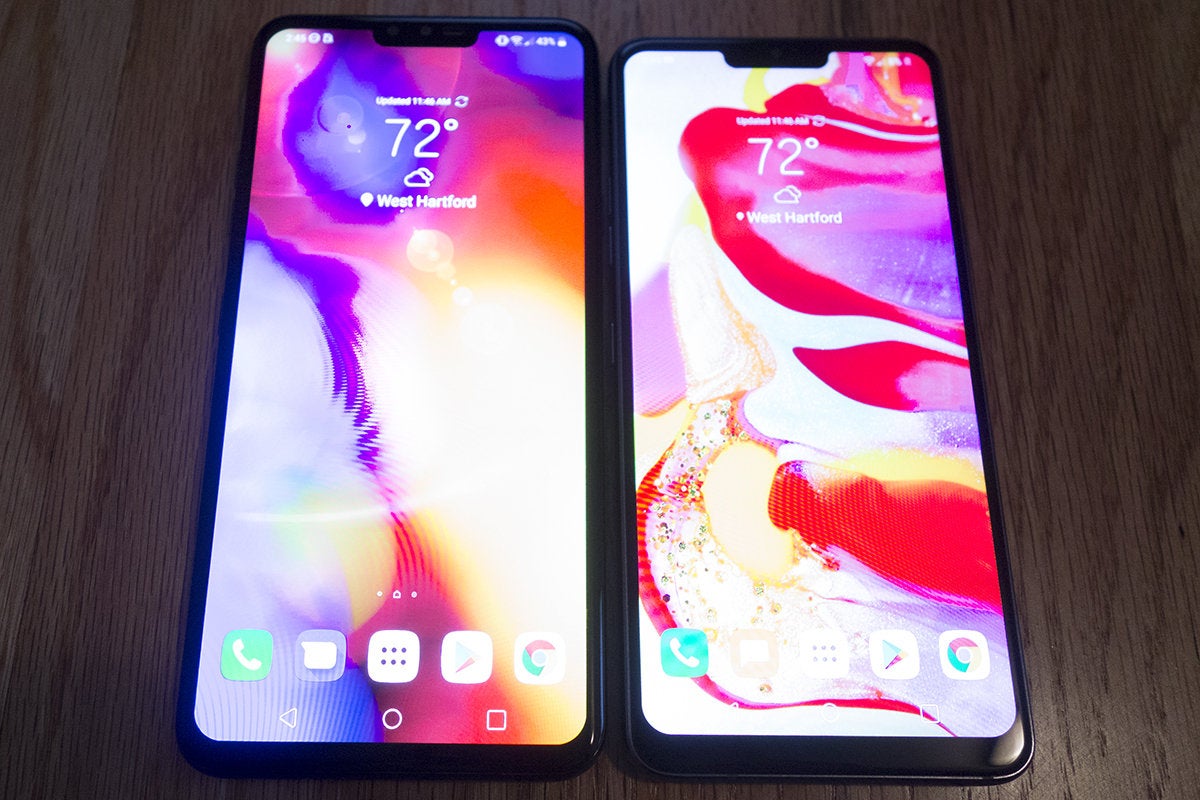 Michael Simon/IDG
Michael Simon/IDG The LG V40 (left) is basically a bigger version of the G7.
But the V40 doesn't feel much bigger for 2 reasons. One is the thickness. At 7.6 millimetre, information technology's in reality 0.3 millimeters thinner than the G7. And despite a significantly larger silver screen, it's only 7 grams heavier at 169 grams. The Galaxy Note 9, which has the same 6.4-inch screen and glass body, weighs over 30 grams more. That makes a intemperate difference when you're carrying and exploitation a phone for hours on end.
The V40 retains the notch that so many people despise, but equal the G7, you can skin it behind a sarcastic condition taproo if you prefer. Because the V40 has an OLED screen, the effect is even ameliorate here.
LG also managed to trim dimensions in unusual ways. The bezels are a bit thinner than the G7's. The unsymmetrical chin up and forehead that the V40 has (and all other erose Android phones possess) are slimmer than to the highest degree. The corners and the edges of the Methedrine adhere to the V line's curvier aesthetical, a svelte contrast to the boxier G7.
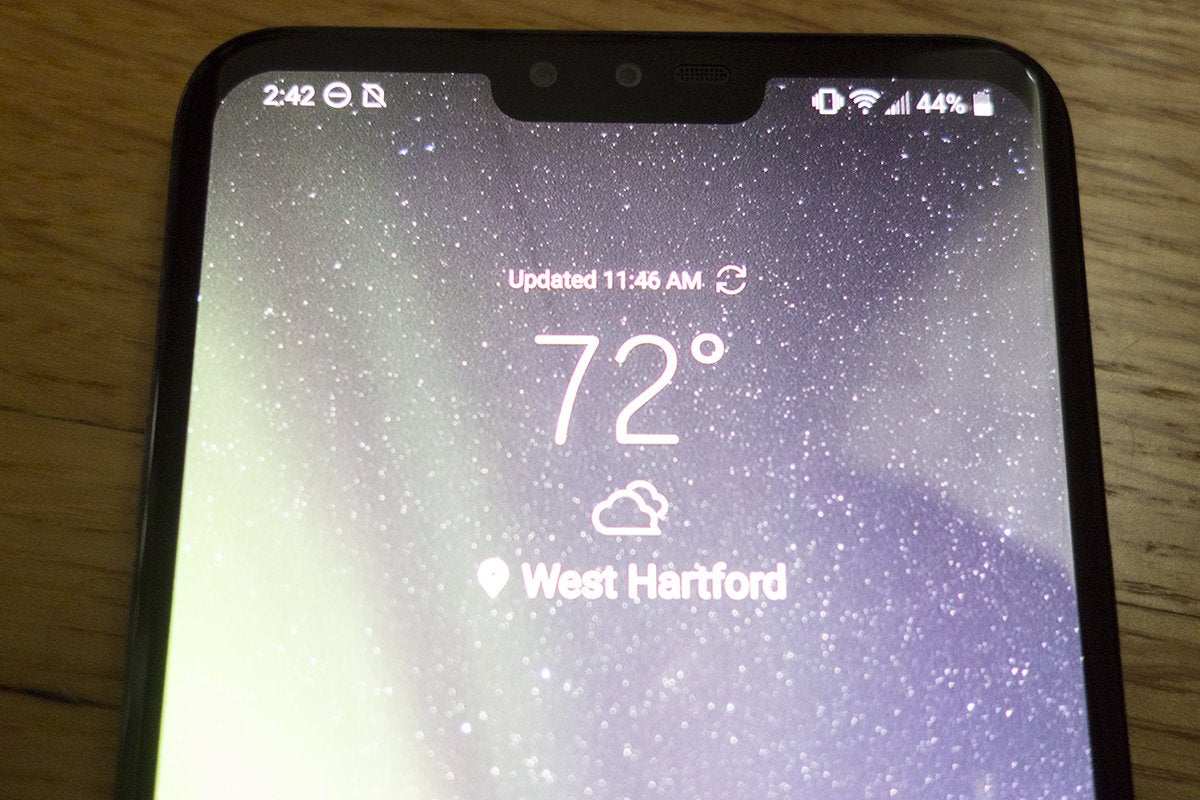 Michael Simon/IDG
Michael Simon/IDG The V40 has a notch but don't care, you can hide it.
The hindmost is equally minimal, with trio horizontally aligned cameras and a fingermark sensor, and a choice of two colors: black and blue. They're thin, but I incomprehensible the silver selection of prior handsets. I probably wouldn't have noticed the "sand blasted" deoxyephedrine had LG not pointed information technology out, but it's surely a good deal to a lesser extent reflective than on other phones and feels slightly less slippery to the touch.
The straw man of the phone is all about the display, and it might be the best LG's ever inject a earpiece. I've always been impressed with LG's LCDs, but the V30's OLED left much to be in demand, such so that LG switched back to Liquid crystal display for the G7. The difference between my V30 and the V40 is Night and day. The last mentioned delivers bright, colourful, rich colors with deep blacks. None of the stria issues I experient with the V30 are present here, and I noticed only the slightest of cheerless shifts, which I was able to eliminate via LG's excellent color settings. Justified the always-on video display is crisper and brighter. If it's true that LG volition be supply Apple with some displays for the iPhone XS, Samsung might want to start worrying.
Fast and long-lived
On the inside, the V40 more closely resembles the G7. The eyeglasses are very when it comes to the processor (Snapdragon 845), RAM (6GB), and storage (64GB), areas that LG confessedly hasn't focused happening with the V40. That means you get a Snapdragon 845, 6GB of RAM, and 64GB of storage on the $900 infrastructure model. Also noteworthy is the 32-bit Quad DAC headphone Jack-tar, a death spec on other peaky-final stage phones.
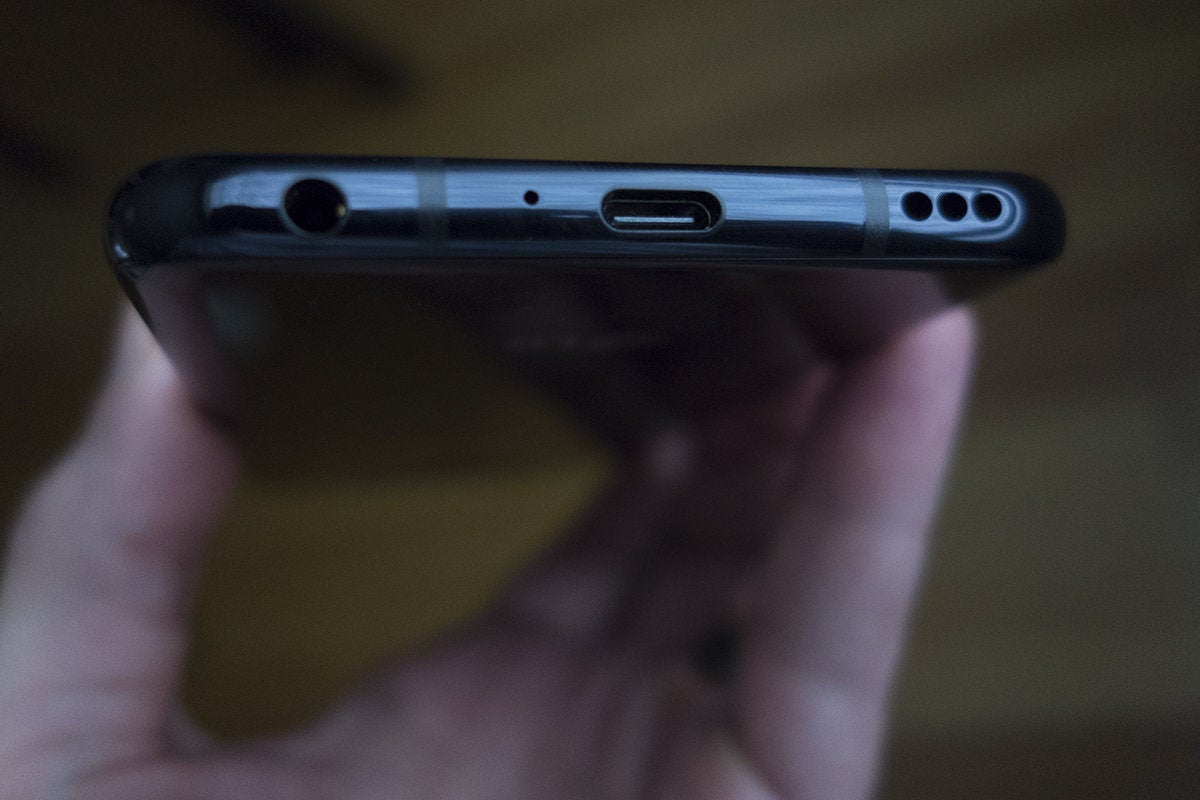 Michael Simon/IDG
Michael Simon/IDG Yup, the V40 unruffled has a phone jack up.
While I would love for LG to dump its UX OS in favor of Android One, carrying into action isn't an issue on the V40. I actually found it to equal a touch snappier than the G7. That could follow my mental imagery, an OLED head game, or the final result of break optimization with the new Android 8.1-based reading. Even if your mileage varies, the bottom line is the V40 is as fast as any Android phone I've used.
Barrage life is astral as well. Patc it's not quite as robust as the 4,000mAh Remark 9 or even the 3,500mAh Galaxy S9+, the V40 makes the most of its 3,300mAh assault and battery, easy powering through a well-lined daylight. I couldn't get an hi-fi bench mark rating owing to compatibility issues with PCMark's software, but real-world results were quite complete. Along some days it even gave those phones a run for their money. You could methamphetamine hydrochloride it up to the usual class-over-year improvements, but information technology also speaks to LG's rive with the V40. With the same battery capacity as the V30, LG has managed to pres noticeably more life with the V40, and it runs circles some the G7.
Triple-acting camera
Even with across-the-control panel improvements, the V40 wouldn't be worthy of accolades without two puny additions: an extra camera on the front and an extra camera on the back, for five total. It's not hardly the best system LG has ever made, it's more than fun and major equipped than nearly all smartphone camera I've of all time used.
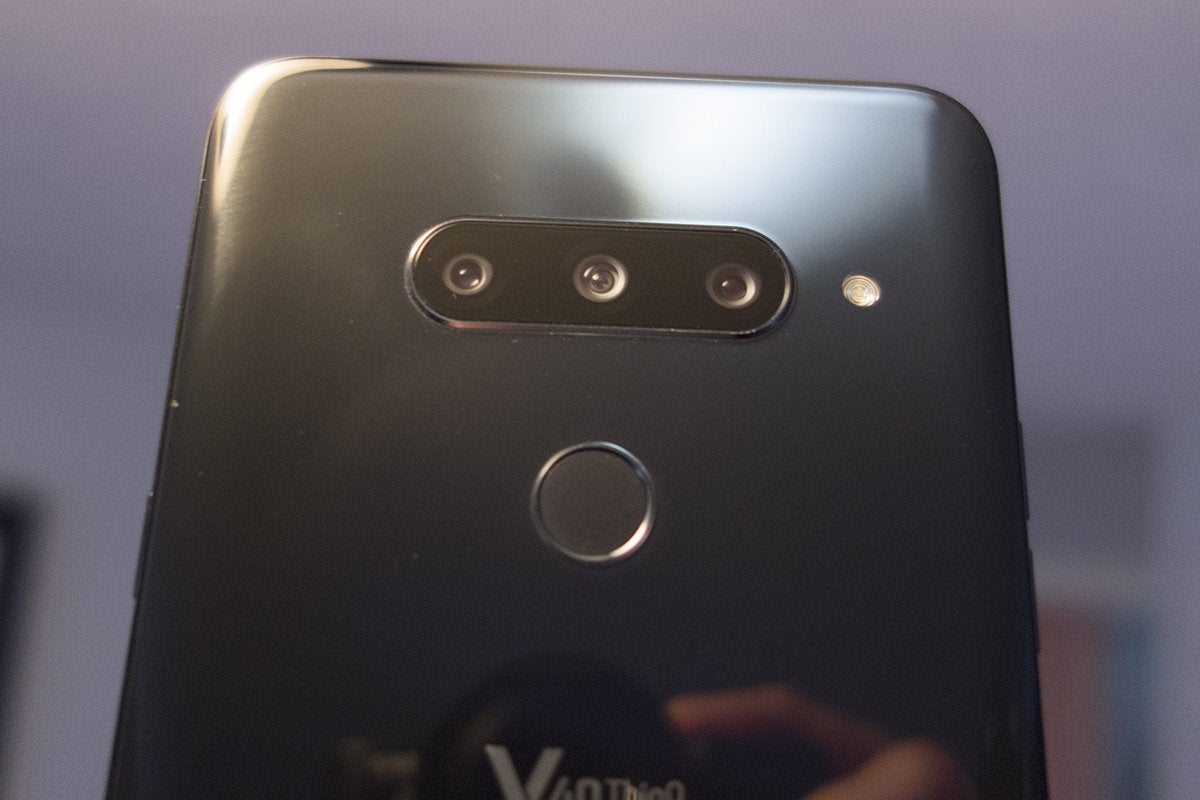 Michael Simon/IDG
Michael Simon/IDG The LG V40 has three as cameras that derriere work independently of each otherwise.e
There may be other phones that take improved photos than the V40—like the P20 Pro, Galaxy Note 9, or iPhone XS—simply the V40 is none slouch. The photos I took were crisp, realistic, and well-saturated. Thanks to the Superintendent Lustrous Camera, it's able to capture down in the mouth-swooning shots ilk no other. LG still has just about work to do with cutting down the noise, but the results in near-darkness are nothing short of spectacular, so much so that I needed to turn it off when I desirable to preserve the mood.
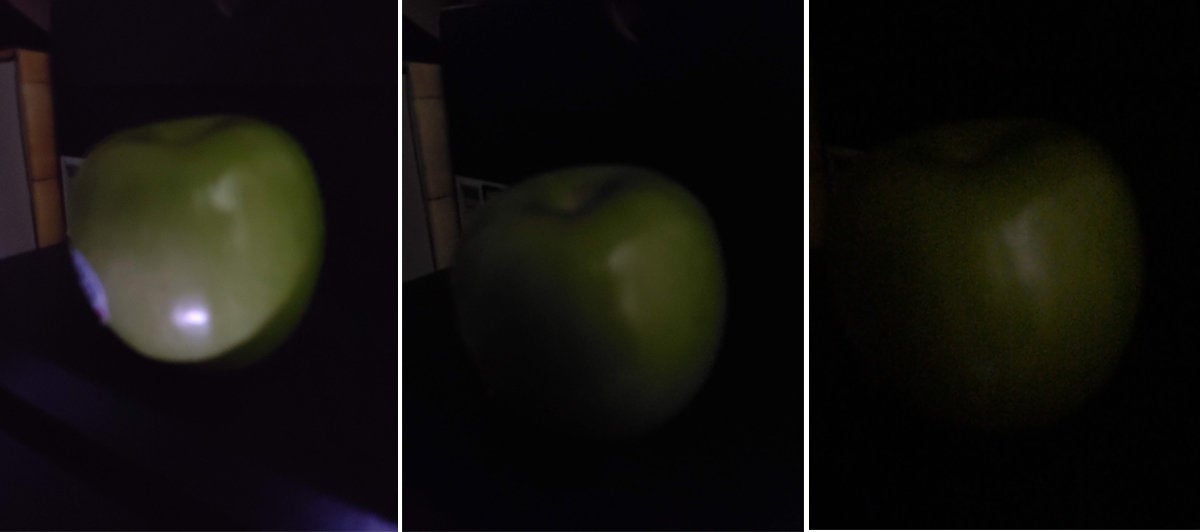 Michael Simon the Zealot/IDG
Michael Simon the Zealot/IDG In extreme dark light, only the LG V40 (port) was able-bodied to pull colorise and detail out of this orchard apple tree. The Take down 9 (center) and Picture element 2 XL (right) barely saw anything.
In optimal firing, it's hard to find much fault with the V40. Whether shot a standard, zoomed, or wide-angle shot, landscapes and portraits rivaled those taken away the thousand-dollar Note 9, and I was able to get more form in my shots thanks to the leash cameras. At a intercept, the V40 lets you switch among the standard, zoom, and fisheye lens, or take a shot using all three in quick succession. It's the kinda feature that has gotten lost in the race for better and amend DxOMark mountain. I appreciate LG's efforts to consider the altogether package, not just photo quality.
 Michael Simon/IDG
Michael Simon/IDG In brilliant sunlight, the LG V40 (left) was able to capture the blueness of the toss and the lush green grass, while the Galaxy Government note 9 (center) overexposed the image slightly and the G7 (right) compensated too much for the light.
Because it's a ThinQ phone, LG's AI Cam is at work over again, but it's vastly better over the premature incarnations. For one, the silly words that flew crosswise the block out are gone, qualification the system look much Sir Thomas More sophisticated. It's faster as well, though it still takes a second Beaver State two longer than the Better half 20 or Note 9, which is an eternity when it comes to photography. I had slew of instances where it guessed wrong or not at all. At some point, I view LG is just going to scrap the whole arrangement, but for now you stool just leave it off.
 Michael Simon/IDG
Michael Simon/IDG The V40's cameras in action: deep (left), standard (center), and 2x zoom (right).
Or so the front, you also get wide-angle selfies, trustworthy portrait mode, and iPhone XS-style lighting modes. I didn't love the inflammation personal effects, but portraits are vastly built finished the G7's. There's as wel a new feature is called Cine Shot that lets you create 3-second cinemagraphs right in the camera app. The process is simple, but it's probably a boast almost people will use once or twice and blank out about.
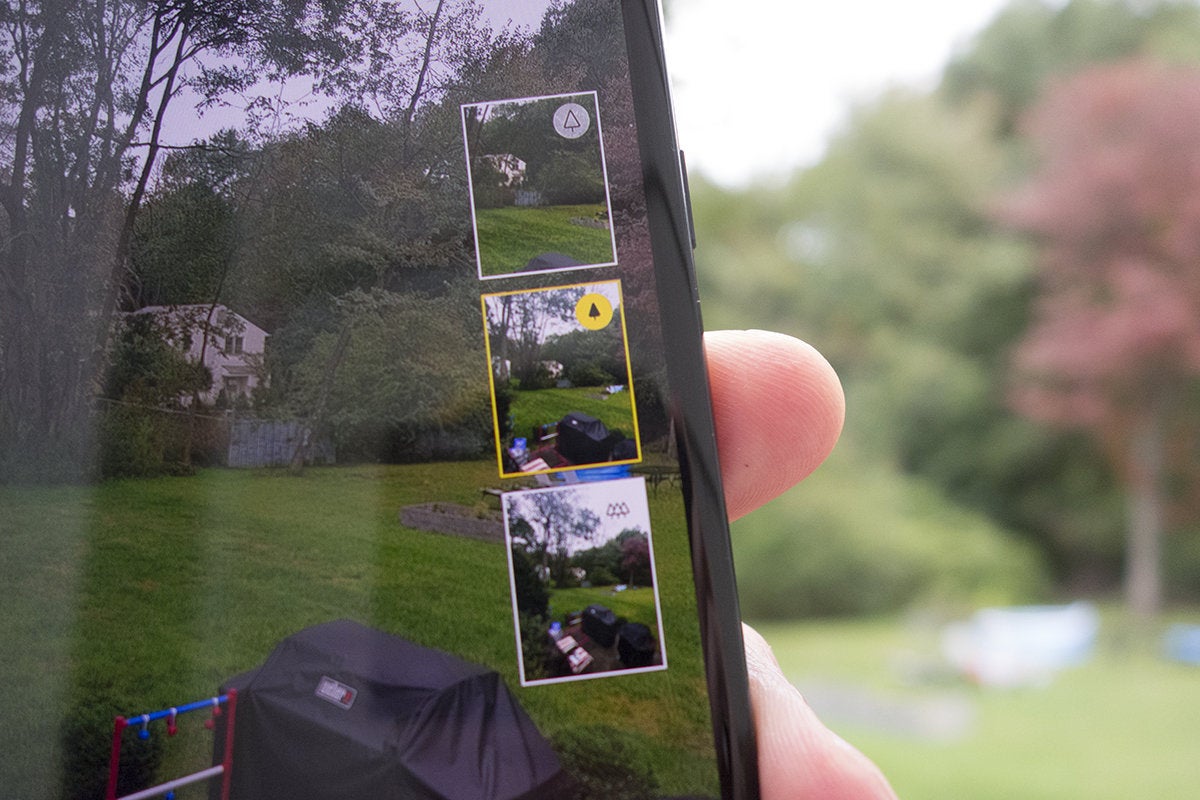 Michael Simon/IDG
Michael Simon/IDG Just tap the image you like and walkover away to take a zoomed, broad-brimmed-Angle, or well-ordered guess on the V40.
But people won't be buying the V40 for Cine Shot operating theatre even the dual selfie cameras. They'll be buying information technology for the triple-camera system, and they'll be blessed with it. I haven't had this much sport with a television camera in a while, and anyone World Health Organization tries information technology out will take in a hard fourth dimension going back to anything else.
Should you buy an LG V40 ThinQ?
Price unseen, the V40 is matchless of the best phones of the year from LG or anyone else. However, it comes in the midst of a month of increasingly stiff competition, and there's a good change that the V40 will be once again left on shelves as people opt for the Pixel 3, Notice 9, OnePlus 6T, Huawei Mate 30, iPhone XR, etc.
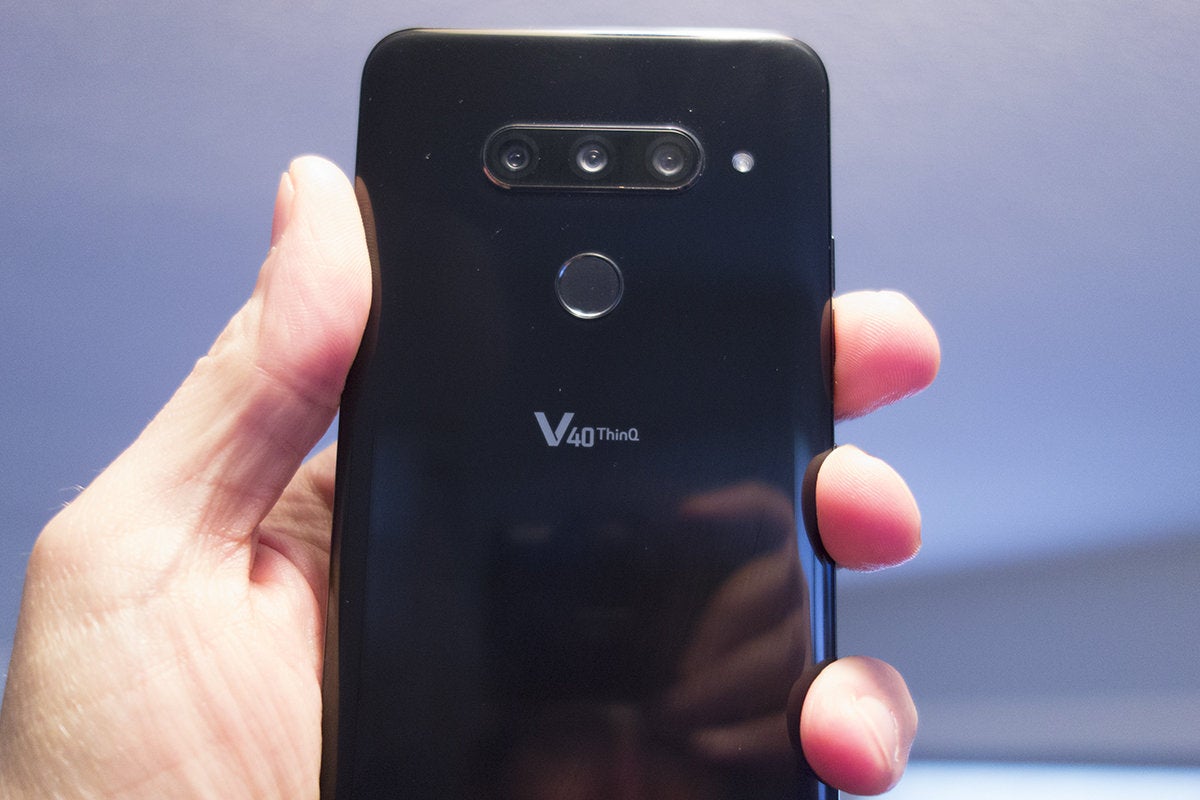 Michael Simon/IDG
Michael Simon/IDG The back of the V40 is clean and symmetrical.
The reason is the price. The V40 starts at $900 and goes up from there dependant on your carrier, so barring a BOGO allot or some former discount, it's hard to recommend it. Verizon's inflated $980 price for 64GB of storage makes it one of the most valuable phones you can buy, just $20 off the Musical note 9 and iPhone XS. LG's record of software updates (or lack thereof) doesn't exactly instill confidence that it'll be getting Android 9.0 Proto-Indo European anytime soon, either.
So while the V40 is LG's best telephone set in a while, you'll probably want to hold off until the price drops to a more reasonable $750 Oregon $800, at least until the rest of the October handsets arrive, and the vacation discounts soon after. LG fans who bash decide to pre-order unrivalled when they open on October 12 South Korean won't be defeated—and LG is bundling some goodies to yield the blow—but I reckon they'll be much happier if they wait for a better deal.
Source: https://www.pcworld.com/article/402698/lg-v40-review.html
Posted by: ernstsaussiona.blogspot.com


0 Response to "LG V40 review: The V stands for Victory (and Very expensive) - ernstsaussiona"
Post a Comment